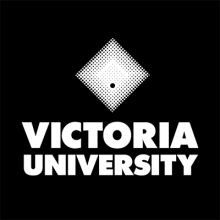Zipping between lectures and seminars on a diverse range of topics is sometimes celebrated as one of the joys of undergraduate life. A history student might take their seat at a lecture on the Holocaust in the morning before prepping for a seminar on apartheid South Africa that afternoon, while their scientific housemate might revise for a particle physics exam one minute, and then step into a trigonometry tutorial the next. In some institutions, some might even combine a tutorial on Shakespeare one day with hands-on instruction in mechanical engineering the next.
But do students benefit from tackling so many topics at one time? The pandemic has triggered a fundamental rethink of many academic orthodoxies, but the nature of students’ weekly timetables has largely been ignored. However, some institutions that have already begun to grapple with this issue suggest that now could be the time to adopt a radical new teaching model.
THE Campus resource: How challenging can my content be?
In 2021, the University of Suffolk decided to do that, announcing that it would implement “block teaching” across all of its undergraduate courses for the next academic year, in response to the disruption caused by the pandemic. Block teaching is a model whereby students are taught one subject at a time, usually over a period of between three and six weeks. Suffolk’s adoption of it came after a successful pilot in its business school and on most of its social science and humanities courses, which saw average student grades rise from 56 to 66 per cent. Introducing block teaching across all undergraduate courses, apart from those that require apprenticeships or placements, was the next logical step, says Ellen Buck, the institution’s director of learning and teaching.
The institution, established in 2007 and given university status in 2016, now teaches single modules over an intensive four-week period, followed by a fifth week for assessment. The aim is “to develop a learning model that supports student engagement: that helps them focus on what they’re studying at that time”, Buck says. Students from socially disadvantaged backgrounds have been among the biggest winners: “Studying three different subjects at once, alongside everything else in their lives, is a big ask,” explains Buck, who says the stress of revising for multiple exams at once can have a harmful impact on such undergraduates’ mental health.

Suffolk took inspiration – and advice – from Victoria University in Australia, which converted to the block teaching model in 2018, initially only for first-year undergraduates, to help improve its dropout rates. For first-generation students, being thrust into higher education and studying four subjects at once was a “bewildering experience”, contended Peter Dawkins, the university’s vice-chancellor at the time.
Adam Shoemaker, the current vice-chancellor, says the success of block teaching, which Victoria now uses across the board, was apparent during the pandemic, when student satisfaction scores barely dropped despite the move online.
Before implementing block teaching, more than 36 per cent of Victoria students either repeated or failed courses; that has dropped to 9.2 per cent, says Shoemaker. Non-native English speakers, a category that includes international students and those from immigrant families, have also thrived under the new model, with pass rates rising from 82 per cent in 2017 to 93 per cent in 2020 and 93.4 per cent in 2021. “The standard of marking has been just as rigorous, if not even more so,” adds Shoemaker.
Requests for academic dispensation have also dropped by 80 per cent, he says, hinting that the previous model may have been setting up some students to fail. “People talk about resilience as being a personal characteristic of individuals, but it can also be [encouraged by] systems of education,” he contends.
Block teaching has improved Victoria’s employability too, with the Melbourne institution riding high in Australia’s national Employer Satisfaction Survey, which polls firms about their intake of recent graduates.
Southern Cross University, where Shoemaker was previously vice-chancellor, has recently introduced a modified version of block teaching, too, with students being taught two courses across six weeks. It is still “a much more focused approach to higher education” than standard timetabling allows, explains Thomas Roche, Southern Cross’ pro vice-chancellor (academic quality). As at Victoria, the move has cut attrition rates among students from low socioeconomic backgrounds, as well as among mature students and Aboriginal and Torres Strait Islander people. “Those students are also more likely to be juggling other demands in life – quite often they’re working while studying or have a family to look after,” Roche says. But because they study intensively and get feedback more immediately, they get a sense of how they are doing much earlier on.
“That feedback and intensive engagement with the staff really boosts confidence,” Roche explains. “In the past, there was this cliff in week seven, when a percentage of students just never came back. They never submitted that final essay; they never turned up for that final exam. That’s not the case any more.”
Back in the UK, the University of Plymouth’s introduction of block teaching for first-year undergraduates has also improved grades. Since 2015, undergraduates have spent the first four weeks of their first and second terms studying one module intensively and the remainder of the term studying courses alongside each other. In 14 out of 16 departments, the average mark for the immersive model in the first semester rose to 67 per cent – almost four percentage points higher than traditionally taught modules, according to a 2020 study published in the Journal of Further and Higher Education. The difference was more pronounced for male students, and those students who entered the university on the lowest entry tariffs.

Yet introducing block teaching is not without its challenges, admits Southern Cross’ Roche. “Academics, like most people, are creatures of habit,” he says of the difficulties of asking scholars to rip up their traditional approach to teaching. Block teaching requires “really interactive learning”, which entails “smaller groups, with tutorials or workshops where they’re doing case studies, where they’re solving problems, they’re applying knowledge”, while material that was previously delivered in lectures has to be packaged into on-demand and interactive online modules.
Suffolk’s “block and blend” approach, meanwhile, is “a whole different pedagogy and needs to be intentionally designed as such”, says Buck. “It is not just ‘lifting and shifting’ lectures online but really thinking about what works best.”
The staff training and professional development required can entail significant investment, says Shoemaker. “You can’t just assume that people will be able to do this just because they’re interested in it,” he says. “One has to demonstrate to the professional accrediting bodies, for instance, that there’s no degradation of quality.”
Shoemaker also cautions against “slavishly sticking to just one version” of the block teaching model. For instance, “we’re finding that slightly longer six- or eight-week periods seem to work better for the more intensive, more challenging postgraduate subjects. This is not a short-haul project: it is long term, but it is also transformational.”
Block teaching does not work in all contexts, however, explains Laura Dixon, a lecturer in tourism and events management at Liverpool John Moores University, which experimented with the approach at its business school before reverting to its previous modus operandi. Dixon, who published her analysis of the pilot in the Journal of Further and Higher Education, says lecturers enjoyed the process as the concentration of teaching loads into a short number of weeks freed up more time for other pursuits, such as research. But students struggled with an increased workload and, crucially, missed a lot of instruction if they needed to take any time off.
“It’s really difficult if, just by being sick for a week, you’re potentially missing a third of the contents of a module,” Dixon says. “We had to really spend a lot of time helping students who ended up missing far more content than they would otherwise have done. If you’re going to do [block teaching], you have to really consider having a strong contingency plan for students who miss substantial chunks of learning. It didn't work for us, but we have taken elements of it and embedded it on to our courses.” Those elements, she says, include efforts to improve key study skills, such as academic writing, lecture note-taking and referencing.
Other critics have a deeper antipathy to block teaching, wondering if this intensely modular approach is suited to the more reflective learning that universities typically tout as their unique selling point.
“For deep learning and deep understanding, I don’t think it’s the best thing,” says Graeme Hocking, head of maths and statistics at Murdoch University, who feels that students need time to process what they have learned and to see how it interacts with other knowledge.
“University programmes are usually designed so that while you’re doing multiple things at once, they are all interrelated. The block teaching model assumes a very linear structure where you learn a skill and move on, so it is [better suited] for intensive short courses,” he says, adding that the higher grades seen by some universities that use block teaching do not necessarily equate to better prepared graduates as there is some evidence that if block-taught students are tested again several weeks after the end of the block, “the tail-off [in scores] is quite high.”
Exciting new models are not always adopted in the interest of creating the best outcome for students, even if they seem keen on the idea, he adds. “What’s happening nowadays is driven much more by cost and expedience, and even sometimes because universities want to market themselves,” he says. “In the rush to be innovative, new models are not really analysed properly.”
David Helfand, professor of astronomy at Columbia University, admits that he, too, had some initial doubts about block teaching: “I thought, ‘That’s weird: I don’t know if that will work’, and now I have the same reaction when I talk to academics about it, which is, ‘That may work for another subject, but not for mine.’”
Helfand is considered by many to be the father of block teaching, having taken long-term leave in 2005 to help found Quest University in British Columbia, which has used block teaching since its inception. However, he is quick to brush off the title, pointing to Colorado College as the birthplace of block teaching. “They’ve been doing it now for 51 years,” he said. “Remarkably, they implemented it in just a year. Some teachers didn’t like it and quit, but they’ve been doing it ever since.”
He acknowledges that the technique may not work for all courses; students could not read 10 books in three weeks for a course on the history of the English novel, for instance. However, they could be asked to read one or two books deeply and carefully, then discuss them, question them and learn to read the social contexts in which they were written. “That equips you to read all the rest of 19th-century British literature for the rest of your life,” he explains.
For Helfand, block teaching allows students space to think about each subject deeply, without others intruding. In the traditional format, students just don’t have the intellectual energy and focus to assimilate the skills being taught, he says. Equally, block teaching fits very well with the current trend towards microcredentials, allowing students to “dip in and out, rather than having to come in for an entire semester”.
Block teaching commands students’ attention in a way that traditional teaching does not, Helfand believes, given the competition for that attention created by YouTube, Instagram, WhatsApp and countless digital distractions. “As you juggle more and more tasks, your performance gets worse,” he says, adding that the problem is exacerbated by the fact that people believe the opposite.
If students study one programme at a time, they can focus on it in the same way as on a full-time job. “By having much more intense time spent on the subject, you have the space to explore a problem and fail. That’s how you learn: by failing,” Helfand says. Such intensity also gives students an earlier sense of whether they really enjoy a subject, potentially saving them months of wasted time if they decide to switch, he adds.
Hamish Coates, professor at Tsinghua University’s Institute of Education and director of the Higher Education Research Division, is also a fan of block teaching, saying it helps students to “make swift progress with specific knowledge or skills”. And while there is no one-size-fits-all model, institutions that explore block teaching are intrinsically ahead of the game, he believes. “The very act of ‘education redesign’ helps improve the offer and students’ engagement,” Coates says. “Putting most things online or into hybrid mode over the last year spurred a massive amount of education reform.”

But while lecturers may have been content to temporarily switch their teaching online, many scholars may baulk at the idea of giving up the autonomy afforded by semester-long modules to work in closer collaboration with colleagues.
Shoemaker accepts that block teaching “creates different careers for academics” that “look different” to the lone educator whose courses are only loosely connected to their colleagues’ teaching. Still, he can envisage the model following problem-based learning (the “Maastricht Model”) into the mainstream in the coming years given its responsiveness to the needs of students who haven’t been fully prepared for tertiary education in the traditional way. He is fielding increasing numbers of enquiries from other universities around the world, including in Canada and South Africa, who are interested in Victoria’s experience, and he has “now seen examples [of block teaching] developing on four continents. He feels there is “the potential for a global network of those interested in this experiment…so we can test each other and benchmark”. He has even written to Australia’s education ministry to suggest a trial of block teaching in schools.
Helfand hopes the re-evaluation of undergraduate learning prompted by the pandemic will lead to changes at Columbia, too. “In May, I taught the normal core curriculum courses in block format, and 24 out of 24 of the students said this was vastly preferable to what they had been doing before,” he notes. However, he fears that Columbia, like other institutions, will ultimately revert to its old ways of teaching post-pandemic.
“University faculty have a reputation for being politically liberal, but they are the most conservative species in the universe,” he says. While 99 per cent of undergraduates are not going to become university faculty, academics will continue to attempt to reproduce graduates like themselves and cherish the assumption that what worked for them must work for the next generation.
Helfand insists, however, that any doubts – either professional or pedagogic – can be overcome. “Everyone says that block teaching won’t work in their discipline until they try it,” he says. “And when they do, they see how truly transformational it is.”
Register to continue
Why register?
- Registration is free and only takes a moment
- Once registered, you can read 3 articles a month
- Sign up for our newsletter
Subscribe
Or subscribe for unlimited access to:
- Unlimited access to news, views, insights & reviews
- Digital editions
- Digital access to THE’s university and college rankings analysis
Already registered or a current subscriber? Login










